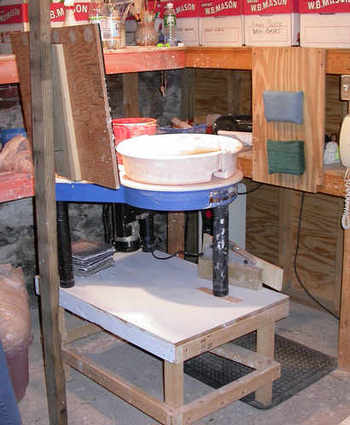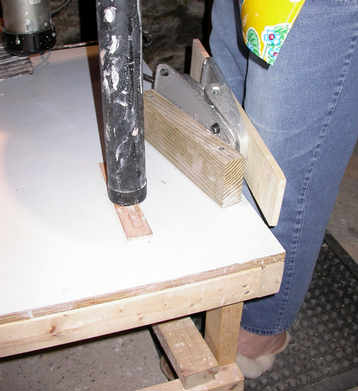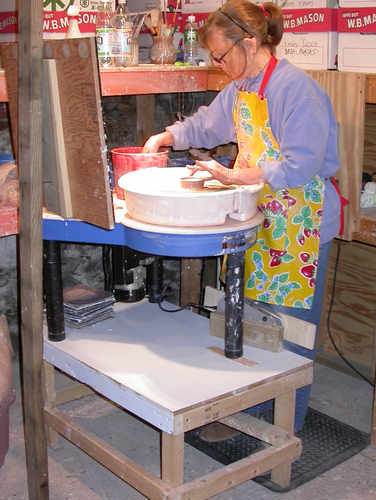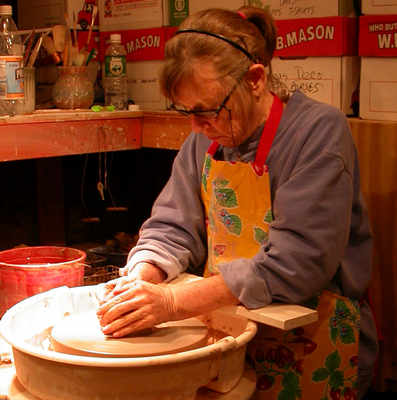 |
Back strain can be enormous sitting hunched over a wheel trying to impose your will on a lump of soggy, ground-up rock. Elaine Dow's studio was designed to minimize that strain. Like many home studios, it is a re-purposed storage room which already had shelves. The wheel was positioned so that she could work with her back supported by a back-board built spanning the shelves The two back-support cushions were made by glueing foam to wood scraps and then covering the combination with fabric. They were attached to the back-board at the proper height using short screws from the reverse side. Her Shimpo Velocity wheel is set atop a table that was built to bring it to the exact height she needed. A high quality rubber foot relief pad on the floor behind the wheel completes the station.
|
|
We modified the foot pedal into a knee-control using short pieces of wood and dry-wall screws of various lengths. Amazingly fine control can be achieved flexing your knees while keeping your weight evenly on both feet. Once you set the wheel speed this way, you can get away from the control and not change it.
|
 |
 |
The 2x4 in the left side of the picture extends from the floor to a joist overhead. It supports a large mirror angled to give her a side view of the piece from a five-foot distance as she is throwing it.
|
| This is the mirror view from close to the potter's perspective. |
 |
 |
We created a removable elbow rest that fits over the rim of the drip pan using castable epoxy available in wood-workers supply stores. First, cut and paint a board, place several screws projecting from the work area to hold the set plastic to the wood, mix a large lump of material, and form it over the screw tops. Place kitchen wrap over the soft epoxy to prevent it from adhering to the splash-pan rim and then form the final shape using the rim as a mold. Two screws outside the rim snap into place and hold the board on the rim while in use.
|




